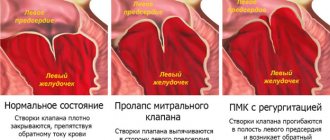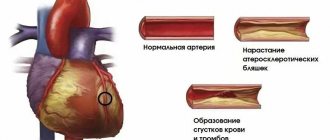Every young person has experienced heart palpitations at least once in their life. There are several reasons for the malfunction of the main organ of the circulatory system, not all of them indicate that a person has a serious health problem.
For example, the heart beats more often during stress or during intense sports activity. However, in medicine there is a diagnosis of arrhythmia for a reason. Some pathological situations make military service with such a diagnosis impossible.
Can people with heart arrhythmia be recruited into the army?
To answer this question unambiguously, it is important to understand the nature of the disease before visiting the military registration and enlistment office. Sinus arrhythmia is not a rare occurrence among young people. With such a diagnosis, a conscript can go to serve if the arrhythmia does not lead to disruption of heart function.
If a young man does not experience problems with the functioning of the body during arrhythmia, and does not need medication to restore his well-being, then he may be considered fit and even recommended to the army in order to recover from arrhythmia: to strengthen the heart muscles during service.
Cardiac tachycardia and the army
Physiological tachycardia under a certain load on the body is not considered a pathology and does not pose a health hazard. However, in some cases, it indicates other existing pathologies in which military service can cause complications, even death.
Tachycardia is expressed as a change in heart rate - more than 90 beats per minute. Under the influence of certain factors - alcohol, physical activity, sex, mental stress, emotional excitement, the heart rate increases, but does not cause serious consequences for the body, it normalizes when negative factors are eliminated. With pathological tachycardia, a change in the frequency of beats per minute is observed in a calm state, and under the influence of provocateurs it threatens life.
Tachycardia is accompanied by fainting, frequent dizziness, weakness, shortness of breath, so conscripts and their relatives are concerned about the question of whether it is possible to serve in the army with such a diagnosis. It all depends on the reasons provoking tachycardia, the general condition of the young man, and the presence of concomitant diseases.
- Sinus tachycardia manifests itself with increased physical and emotional stress. The conscript is taken to serve with minor restrictions on the performance of duties.
- Supraventricular tachycardia occurs even in a calm state and requires immediate medical attention. The conscript is given category "G", as temporarily unfit. The examination will be repeated next year.
- Ventricular tachycardia is the most dangerous type of disease, threatening the life of a conscript. It is often caused by myocardial infarction or drug intoxication. The conscript is given category “G” or “D”, as unfit for military service.
In order not to go into the army with a diagnosis of tachycardia, you must first undergo examination by several specialists and have supporting documentation. The military commission is guided by the results of its own examination, as well as those of its colleagues who studied the conscript’s body earlier and wrote a conclusion.
Types of arrhythmia that are exempt from military service
The Schedule of Diseases - the official list of diseases for which exemption from the army is due - states that conscripts with severe ventricular extrasystoles, paroxysmal and atrial fibrillation are not accepted for service.
The document states that permanent disturbances of the rhythm and conduction of the heart, which require medical intervention and therapeutic observation afterward, are exempt from conscription. In this case, the conscript is assigned a functional class of heart failure and assigned fitness category “D” or “B”, enlisting in the reserve with the issuance of a military ID.
Heart disease and military service
Heart disease is not a specific diagnosis, but a whole group of diseases in which the normal functioning of the heart is disrupted. Their cause is the presence of a defect in the structure of the organ itself, one or more of its valves or blood vessels. It includes the following pathologies: defects of the interatrial septum (ASD), interventricular septum (VSD), septum between the pulmonary artery and the aorta, etc. Congenital and acquired heart defects (CHD) are known.
Acquired heart defects are most often the result of past infections, autoimmune diseases, and increased stress. The cause of the congenital form is considered to be genetic factors and, possibly, diseases suffered by the mother during pregnancy.
Surgery is one of the most effective methods for treating heart defects.
The clinical picture of the disease depends on its severity and type. This may include shortness of breath, fainting, murmurs and pain in the heart, cyanosis, and frequent infectious diseases. In most cases, the only effective treatment is surgery.
You can often hear stories from people of military age about how someone was drafted into the army with a heart defect. This really happens, but usually young men with such a disease are not accepted into the service. Although, there are also nuances here. Whether a person liable for military service will be accepted into the army depends on the following conditions:
- possibilities of blood outflow;
- presence of deficiency;
- the conscript’s general health at the time of the medical examination;
- normal functioning of heart valves.
A conscript can count on category “B” if there are defects between the atria or congenital valve defects. Category “D” can be obtained for heart failure FC II–IV (functional class). The medical commission must make a similar decision in case of insufficiency of the aortic, mitral or tricuspid valves, as well as in case of second degree regurgitation.
However, it would be a mistake to consider heart defects as an absolute guarantee against being sent to the army - it all depends on the specific case. For example, if the bicuspid aortic valve is insufficient, a conscript may be declared fit - if the defect is compensated. There is a cardiac pathology called “patent foramen ovale.” Doctors cannot agree on whether this phenomenon relates to congenital heart disease or minor anomalies of heart development. However, this is not even the problem: the pathology is quite difficult to determine during the examination, so patients are often recorded in category “A”.
Abuses occur in military registration and enlistment offices; sometimes, in order to fulfill the plan, they can neglect the diagnosis and send a conscript with a severe heart defect to the army. In this case, it is necessary to seek a re-examination and not be afraid to go to court.
Early ventricular repolarization syndrome and WPW syndrome
Premature or early ventricular repolarization syndrome (PVRS) is a curious and complex electrophysiological phenomenon, the nature of which is not yet fully understood by science. There is also no consensus on the consequences of the syndrome for patients. Some doctors consider SRRH to be generally harmless to the body, while others believe that it can lead to a heart attack or cause sudden cardiac arrest.
In most cases, SRS can only be detected using an electrocardiogram.
In the heart muscle, two processes occur cyclically: depolarization (contraction) and repolarization (relaxation). Normal operation of the system is ensured by electrical impulses passing through the cardiomyocyte. With SRR, a small malfunction occurs in the functioning of the organ, which can only be seen on an ECG.
Previously, this defect was not paid much attention, but in recent studies, scientists have been able to trace the connection between the syndrome and the appearance of ventricular arrhythmias, as well as cases of sudden cardiac arrest.
Typically, SRS occurs in people who are regularly exposed to significant physical activity, and is most often found in young men. Moreover, this cardiopathy can hardly be called rare - its prevalence reaches 8%. Myocardial hypertrophy is considered to be the main reason for the development of SRR. For example, athletes often experience thickening of the walls of the left ventricle - this is how adaptation to constant stress occurs. Other risk factors include metabolic disorders, cardiomyopathy, myocarditis, the presence of additional chordae, and hereditary predisposition.
SRR cannot be called a disease in the usual sense of the word. As a rule, it is expressed only in changes in the electrocardiogram, and an exercise test on a bicycle or treadmill eliminates these symptoms. In some cases, the syndrome is accompanied by a clinical picture resembling tachycardia. However, it has been established that SRR can cause dangerous arrhythmias and cause hidden forms of failure.
Typically, the medical commission does not consider SRRH a valid reason for exemption from conscription. If at the same time the young man complains of heart pain, fainting, dizziness or darkening of the eyes, then he is sent for additional examination. Sometimes a young person is given a six-month deferment to complete it. To receive category “B,” the syndrome must be accompanied by severe forms of arrhythmia.
Another anomaly in the structure of the heart that can lead to dire consequences is Wolff-Parkinson-White syndrome (WPW or SVC). This cardiopathology is characterized by disturbances in the rhythm of the organ - early excitation of the ventricles. The main clinical manifestations of the syndrome are tachyarrhythmia (supraventricular, atrial fibrillation and flutter), heart failure. There are several forms of ERV: manifesting, latent and transient.
Wolff-Parkinson-White syndrome is a good reason for exemption from the army
This syndrome is considered a “non-conscript” disease - young people who have WPW syndrome are classified as “D” or “B”. The specific decision depends on the functional class of heart failure that occurs with SVC. In any case, military service is incompatible with WPW - the risks of serious complications are too great.
Military service and heart rhythm disturbances
Bradycardia is a slowdown in the normal rhythm of the heart, which has an extremely negative effect on the functioning of all body systems. In healthy people, the heart rate (HR) is 60-80 beats per minute; with bradycardia, it can drop to 30-50 beats. The frequency of contractions is controlled by the sinus node or pacemaker, located at the point where the vena cava enters the right atrium.
A slowdown in work can be a consequence of a number of reasons: with myocardial damage, disruption of the nervous system, cerebral edema, under the influence of drugs, poisoning, fasting, etc. Heart rate decreases under the influence of low temperature, with severe fatigue. Low heart rate is absolutely normal for trained athletes.
Severe bradycardia provides grounds for exemption from military service
With moderate bradycardia, the heart beats 40-50 times per minute. This is quite enough for normal blood circulation. For some people, such a frequency of contractions is an individual physiological feature, and therefore does not cause them much discomfort. A decrease in heart rate to 30 beats per minute leads to oxygen starvation of tissues and is fraught with serious consequences. This form of the disease is called severe bradycardia. It not only significantly worsens the patient’s quality of life and performance, but is also dangerous due to sudden cardiac arrest.
The question is often asked about whether people with heart bradycardia are recruited into the army? There is no definite answer to this; the decision is made by the medical commission for each specific case separately. And most of all, doctors are interested in how much a conscript diagnosed with chronic bradycardia is able to tolerate physical activity.
Heart rhythm disturbances are covered under Article 42 of the Schedule of Diseases. It contains four functional classes (FC) for bradycardia. The first and second classes of the disease entitle the conscript to apply for category “B”, the third and fourth – for complete exemption from military service with category “D”. The diagnosis must be confirmed by appropriate cardiac parameters recorded in medical records. However, even a conscript has all this; he will be sent for additional examination from the military registration and enlistment office. Usually it includes a standard ECG, daily monitoring of heart function, echocardiography, bicycle ergometry, etc.
Cardiosclerosis and military service
Cardiosclerosis is a pathological condition of the heart muscle, which is characterized by the replacement of muscle fibers in the myocardium with connective tissue. This disease is often a consequence of ischemic disease, heart attack, atherosclerosis of the heart vessels, myocardial dystrophy or inflammatory processes (postmyocardial cardiosclerosis).
Main symptoms: shortness of breath, chest pain, swelling, poor exercise tolerance. In the absence of adequate treatment, complications are possible - arrhythmias (extrasystoles) or aneurysm.
Cardiosclerosis is a dangerous disease in which normal muscle tissue of the heart is replaced by connective tissue
This disease is covered under Article 42 of the Republic of Belarus (clause “c”). You can receive an exemption from service if the following factors are present:
- confirmed presence of cardiac pathology;
- conduction or heart rhythm disturbances;
- failure according to the second FC.
The combination of two of the above signs (1 and 3 or 1 and 2) gives grounds for assigning a category “B” to a young person. Naturally, the diagnosis must be verified in the relevant medical documents.
Ischemic disease and angina pectoris
Angina pectoris is a clinical syndrome that is a characteristic manifestation of coronary heart disease (CHD). The cause of this pathological condition is a narrowing of the lumen of the coronary arteries, which, in turn, is usually a consequence of atherosclerosis, vasospasm or embolism. This leads to disruption of the blood supply to the myocardium, its partial blockade, accumulation of metabolic products in the heart muscle and oxygen starvation.
During an attack of angina, a person experiences severe pain in the chest area, which radiates to the neck, left shoulder, and lower jaw. Most often it begins during physical activity or severe stress.
Coronary heart disease is one of the most common pathologies. Angina pectoris is one of its clinical manifestations
Coronary heart disease is one of the most common diseases of our time, and it is also the leader in the number of deaths in the developed world. Angina pectoris is only one form of coronary artery disease; more dangerous manifestations of the disease are heart attack and cardiosclerosis. In addition, with ischemic disease, extrasystole often occurs - a change in the MPP of the heart or its chambers.
In the Schedule of Diseases, IHD is found in Article 44; it has three points corresponding to moderate, severe and moderate course of the disease.
The pathology passes under point “a” if the patient has chronic heart failure (CHF) of class IV and III or angina pectoris of class IV and III. In this case, the conscript receives category “D” and complete exemption from military service. Point “b” includes diseases that are accompanied by insufficiency and angina pectoris of class II, and point “c” includes diseases of the first functional class. In both cases, the conscript is assigned category “B” and is issued a military ID.
The presence and degree of coronary disease is confirmed using ECG (at rest and under load), echocardiography, daily monitoring of heart function, coronography, etc.
High blood pressure and military service
Arterial hypertension or hypertension is one of the most common diseases of the cardiovascular system of our time, affecting up to 30% of the adult population. A sedentary lifestyle, bad habits, unhealthy diet leading to obesity - all these factors increase the risk of developing hypertension. Hereditary predisposition to the disease is of great importance. There are three stages of pathology: mild, moderate and severe; it can be primary or secondary.
Complaining about high blood pressure is a favorite method of getting out of the army
The main symptoms of the disease are: shortness of breath, dizziness, tinnitus, rapid heartbeat, sweating, anxiety, decreased performance, swelling and numbness of the extremities. Treatment of arterial hypertension is individual. Patients are usually prescribed vasodilators and diuretics. We can also add that in the absence of proper therapy, the pathology develops into more severe forms.
The attitude of military medicine towards this disease is ambiguous. Hypertension is a very good reason for exemption from military service, but military medical commissions, as a rule, treat such diagnoses with great distrust. Because it is very often used by those who want to “opt out” of conscription or buy a military ID.
High blood pressure is covered under Article 43 of the Schedule of Diseases. A conscript with hypertension can count on category “B” or “D”, but in order to receive them he must prove his disease. The decision to release a young person depends on several factors:
- Formulation in the medical record. In the relevant documents of the conscript, the diagnosis “hypertension” must be indicated, and not any other;
- Regular requests for medical care, documented. If a conscript has never consulted a doctor about high blood pressure, then most likely he will go to serve;
- Stability of cardiac parameters.
Theoretically, even stage 1 hypertension is incompatible with the harsh everyday life of the army - in this case, the conscript is required to be given category “B” and sent to the reserve. The same applies to pathology of the 2nd degree, but if the disease is in the 3rd stage, then the young man is considered category “D”.
But this is in theory, but in practice even conscripts with the 2nd category can be sent to the army, which is absolutely illegal. If this happens to you, then such a decision must be immediately appealed. Typically, young people diagnosed with hypertension are referred for additional examination to several specialists at once: a cardiologist, an endocrinologist, a urologist, a neurologist.
The army and rheumatic heart disease
Most people associate the word “rheumatism” primarily with a disease of the musculoskeletal system. In fact, acute rheumatic fever is a complex inflammatory disease of connective tissue that affects many systems of our body. Its main clinical manifestation is rheumatic carditis, a severe pathology that affects the heart and its membranes. Symptoms of this disease: tachycardia, chest pain, high temperature, the appearance of extraneous noise in the heart.
Rheumatic carditis often leads to complications: atrial fibrillation, myocardiosclerosis, mitral stenosis, aortic insufficiency, cerebral ischemia, mitral valve prolapse. The consequence of this disease is acquired heart defects.
Rheumatic carditis is an inflammatory disease that affects the tissue of the heart. It is a valid reason for exemption from conscription
The Schedule of Diseases states that a conscript who has suffered acute rheumatic fever is considered temporarily unfit for military service (category “G”) and receives a deferment for 12 months. It is believed that during this period all the complications of the disease will have time to manifest themselves, most of which are incompatible with the army. If at least one of them is discovered during a re-examination, then the young man is exempt from military service with category “B” or “D”. A repeated attack of rheumatic fever is considered by the doctors of the Military Military Commission under paragraph “c” of Article 42, which usually ends with the conscript issuing a military ID with fitness category “B”.
What should a conscript with arrhythmia do?
When experiencing attacks of arrhythmia, it is important to immediately find out whether they are symptoms of other more complex heart diseases. If the conscript has not done so before, you can receive a referral for examination by going through a military medical commission at the military registration and enlistment office.
The young man receives a referral, and his disease is further examined by a cardiologist. He also makes the final diagnosis, which members of the medical commission of the military commissariat must take into account when assigning a category of suitability to a young man for military service.
A problem may arise if the medical commission of the military registration and enlistment office does not order an additional examination, especially if the conscript appears on a summons without documents indicating that he has previously consulted a cardiologist. At the same time, electrocardiography of the heart may not reveal arrhythmia at the commission.
In this case, you need to contact lawyers who will help you appeal the decision of the military registration and enlistment office. The conscript will be helped to obtain an appointment for an additional examination in order to determine for sure whether he has a diagnosis that exempts him from the army.
It is necessary to more actively defend his position as a law-abiding citizen who is ready to serve if his health condition allows him to do so. But this is not easy to do without qualified legal assistance.
Symptoms of heart disease
Symptoms that indicate a pathology of the cardiovascular system include:
- Increased heart rate and feeling of palpitations for no apparent reason;
- Shortness of breath (feeling of lack of air);
- Sudden loss of consciousness, dizziness;
- Swelling, which is localized mainly on the feet and legs;
- “Constricting” and sharp pain in the chest;
- Pain radiating to the arm.
The causes of heart disease are varied. For example: stress, poor diet, alcohol and nicotine abuse, and hereditary factors can also influence.
Symptoms of the disease
The main symptom of angina is pain that appears in the sternum area. Almost all patients describe it with the same symptoms. These include:
- Paroxysmal appearance;
- A pressing and squeezing pain occurs in the area of the heart;
- The pain syndrome is localized in the upper chest;
- Unpleasant sensations move to the right hand.
The following factors can provoke such changes in the body:
- Fast walk;
- Increased pressure;
- Hypothermia of the body;
- Binge eating;
- Nervous tension;
- Emotional disorder.
Features of angina
This disease is accompanied by regular pain in the heart, heaviness in the limbs, shortness of breath and high blood pressure. The lumen in the vessels and capillary network gradually decreases, which reduces the access of oxygen levels to the head center.
As a result, the patient experiences a nagging pain that gradually moves to the arm, shoulder girdle or back. Such attacks have different periods of manifestation. The main cause of this pathology is atherosclerosis of the coronary arteries.
Angina pectoris - exemption from the army due to health reasons
Characteristic chest pain, ranging in intensity from mild discomfort to compression behind the chest, burning sensation, can be symptoms of various diseases. And only 11% of cases are due to diseases of the heart and blood vessels. Whether angina pectoris is not conscriptable for the army can be decided after clarifying the diagnosis with a doctor. Painful sensations in the chest during periods of physical activity or emotional stress lasting more than 20 minutes, dizziness, profuse sweating, shortness of breath, increased blood pressure and headaches require urgent medical attention. Angina occurs when blood flow to the heart is obstructed. The lumen in the vessels supplying the heart decreases, thereby limiting the flow of blood and causing an imbalance in the functioning of the organ. It’s as if the blood is trying to make its way to the heart, which is why chest pain occurs, sometimes radiating to the arm, neck or back. Attacks can occur both during periods of activity and rest, with significant progression of the disease. Develops in most cases due to atherosclerosis of the coronary arteries.
Examination of conscripts with angina pectoris (lack of blood flow to the heart) takes into account the criteria of the Canadian classification developed in 1976. The classification of angina is presented in the figure; the degree is determined by the ability to perform physical actions and activity. In other words, it is determined how difficult it is for a conscript to perform any physical actions and endure psycho-emotional stress. Minor consequences of impaired blood flow to the heart are not non-conscription, that is, angina pectoris is taken into the army when it is caused only during periods of intense stress or emotional stress, and is not burdened by heart failure or other diseases of the circulatory system.
Hearing loss, flat feet, hypothyroidism
Diagnosis of “bilateral chronic sensorineural hearing loss of the 3rd degree.” The doctors diagnosed me with GPS, but the military registration and enlistment office said that I would be fit with restrictions. Is it so?
With a reliably established diagnosis of “bilateral chronic sensorineural hearing loss of the 3rd degree,” conscripts are considered unfit for military service or reserve service.
The conclusion of the radiograph of both feet is as follows: flat feet of the left foot of the 3rd degree (the angle of the arch of the left foot is 162 degrees; the height of the arch of the left foot is 14 mm); flat feet of the right foot, grade 1–2. (arch angle 146 degrees, arch height 26 mm) What will be the decision regarding the eligibility of the conscript?
Citizens with 3rd degree flat feet are considered unfit for military service or reserve service.
Is a conscript diagnosed with “planovalgus foot deformity, chronic reactive arthropathy of the left wrist joint” eligible?
These diagnoses do not reflect the degree of dysfunction, and therefore it is not possible to answer the question posed. In this case, it is necessary to conduct an additional medical examination to determine the degree of dysfunction of the joints, after which the category of suitability for military service or reserve service will be determined.
Is a conscript diagnosed with subclinical hypothyroidism eligible? The diagnosis was made at the age of 18, and a hormonal drug was used. Then there was no observation for a year. This year, an analysis showed that my hormones were normal.
If citizens of military age have subclinical hypothyroidism that does not require drug treatment, they are recognized as fit for military service or reserve service.











